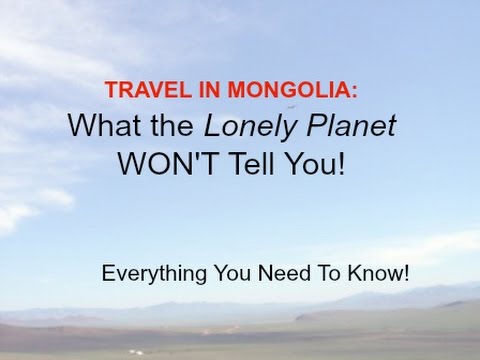
Mongolia, a vast and ancient land, known for its rugged expanses and nomadic heritage, is often celebrated in travel guides such as Lonely Planet for its iconic landscapes like the Gobi Desert and cultural experiences like the Naadam Festival. However, there are myriad layers to this intriguing country that aren’t always covered in mainstream travel publications. Here’s what the Lonely Planet won’t tell you about traveling in Mongolia:
#### 1. The Extremes of Mongolian Hospitality
While guidebooks may mention Mongolian hospitality, they often don’t capture its true depth and uniqueness. In rural areas, visitors are frequently welcomed into gers (traditional felt tents) by nomadic families with an offering of *suutei tsai* (salted milk tea), homemade *airag* (fermented horse milk), or even a meal if you arrive at a mealtime. This isn’t just politeness but a deep-rooted part of their cultural identity that embodies the survival tactic in the harsh environment where helping each other is crucial for survival.
#### 2. The Challenge of Spontaneous Travel
Travel guides might gloss over the fact that spontaneity in Mongolia can be challenging. The country’s vastness coupled with its underdeveloped infrastructure can make getting around difficult. Public transportation outside Ulaanbaatar is sparse, and many roads are unpaved which only become navigable via robust 4WD vehicles, making spontaneous travel plans complicated without proper preparation and local guidance.
#### 3. The Unpredictability of Weather
Mongolia’s climate can catch many travelers off guard as it is subject to extreme variations, often within a single day. Guidebooks might warn you about cold temperatures or brief mentions of sub-zero winters but experiencing sudden weather changes—from sudden snowfalls in autumn to dust storms in spring—can be bewildering without proper gear and readiness.
#### 4. Environmental Challenges
Mongolia is facing significant environmental challenges that are seldom covered in travel books. Overgrazing, desertification, and water depletion are critical issues as they not only alter the natural landscapes but also affect the lives of local nomadic communities who depend on these lands for their livestock.
#### 5. The Real Pace of Nomadic Life
While romanticized views of nomadic life abound in glossy travel features, daily life for Mongolia’s nomads is profoundly tied to a cycle of survival and hard work which involves moving camps seasonally, herding livestock over vast distances, and maintaining strong family units despite harsh conditions.
#### 6. Deep-Rooted Traditions Amidst Modernity
Ulaanbaatar presents a contrasting picture often left out by mainstream guides; while rapidly modernizing on one hand with high-rises and bustling traffic; it still retains deep-seated traditions with local markets selling everything from traditional medicine to cashmere right next to modern malls.
#### 7. Unique Wildlife Conservation Efforts
Mongolia’s efforts in wildlife conservation such as takhi (Przewalski’s horse) reintroduction projects or community-based initiatives to protect snow leopards are profound examples of how traditional knowledge and modern science can blend but aren’t always highlighted prominently.
### Conclusion
Traveling to Mongolia offers more than what meets the eye beyond popular guidebook entries; it’s an exploration into a culture deeply intertwined with its environment presenting challenges yet profound experiences not found anywhere else on earth. To truly appreciate what Mongolia has to offer requires stepping off beaten paths guided by curiosity about both its landscapes and people – an adventure surely worth every bit!
